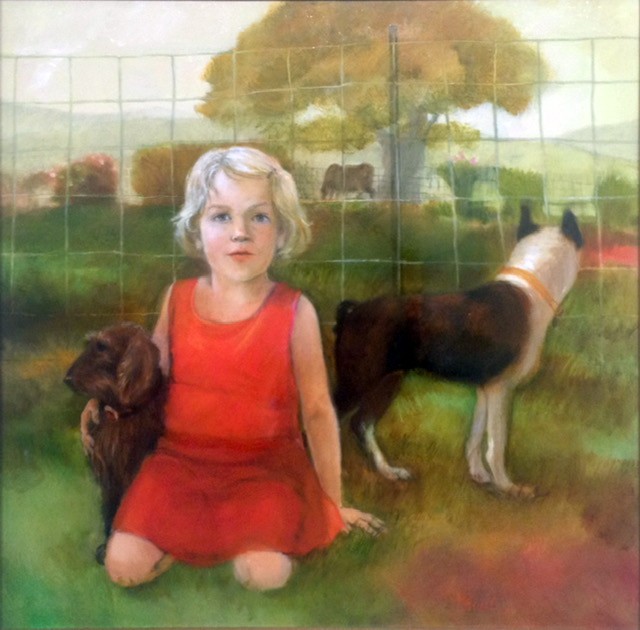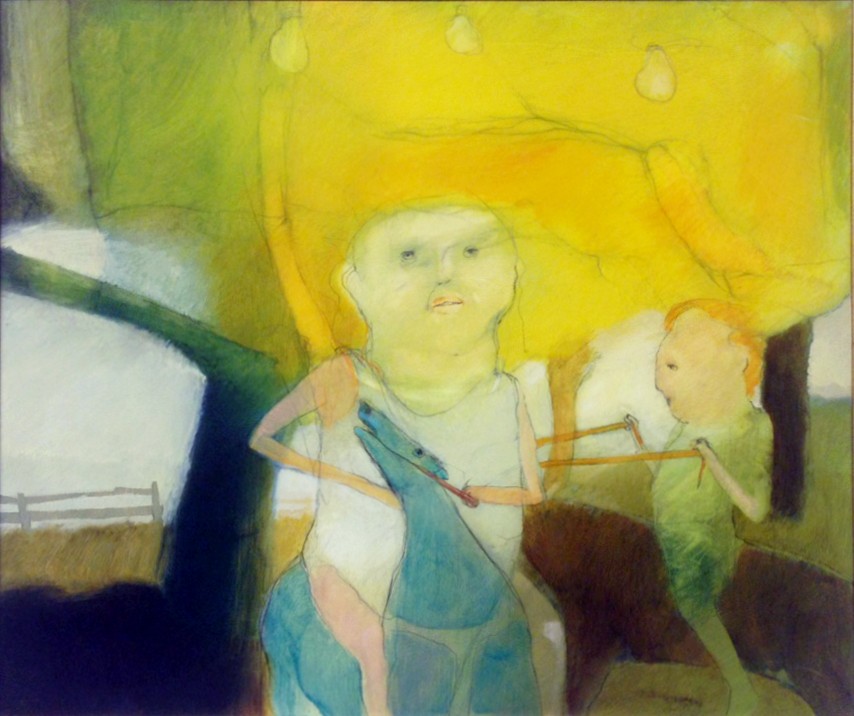A “retrospective†is a specific type of exhibition curated to reveal certain themes or stages of an artist’s career. Depending on the length of that career and the artist’s level of production, mounting such a show can be a significant challenge. The benefit to the viewer is that a narrative, perhaps not known from individual works, unfolds and the artist’s larger vision emerges. Often times these narratives speak of change or resistance to change over a broad swath of time.
Such a concept lies at the core of the works that were selected for Luminous, the retrospective of Carolyn Young Hisel’s work and career now on display at the Headley-Whitney Museum. Hisel’s oeuvre shows a strong interest in the mysterious workings of memory. Many of Hisel’s largest painted works hint at complex and repetitious snatches of personal experience translated into a visual language. The effect is surreal, not just in the way this manifests in Hisel’s specific imagery, but also her technique and materials.
Transparency, such as in the large painting Red Piano, is repeatedly employed in the form of see-through walls and rooms constructed by thin and likewise transparent layers of paint. Imaginary ephemeral surfaces and the hard material realities of paint and light are woven together in a way that is both pleasing and unsettling. As insides merge with outsides, the figures Hisel places in her scenes seem perturbed by the effects of disintegration they see around them.
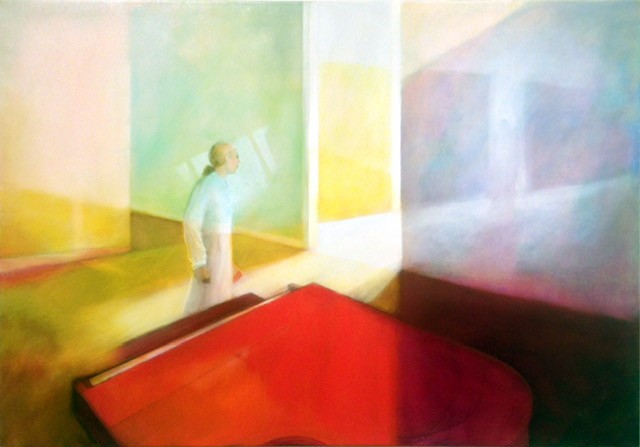
Hisel’s work is an ambivalent engagement with such uncanny glimpses of memories. The uncanny often exists in a space where remembrance and experience mingle in unexpected and deeply affective ways. Hisel’s figures, placed within strange landscapes, seem transformed by the same kind of flattening, softening, and disintegration occurring to buildings and ground. While some of these figures are whimsical or comic (clownish even), the familiarity and unfamiliarity of their humanness makes them something else entirely. For example, one image that greets viewers to the exhibition is a near life-sized monstrous creature whose bashful awareness of the viewer hints also at some vague confrontational danger.
Spindle-limbed figures appear across many of Hisel’s works – their faces are nearly always flattened and expressionless. Yet these faces are also sympathetic. They possess a similar kind of classical softness employed in Hisel’s more conventional nudes or ephemeral figures. They appear like a counterpoint to classical beauty, bodies abstracted to essential rather than ideal parts. A juxtaposition of two paintings, Arrivals and Passage, shows this in vivid detail. While ostensibly images of infant and elderly figures, they are ultimately difficult to differentiate. They share common features, two representations of an earlier primal existence. The uncanniness of these figures, though they appear more or less human, is the almost-ness of their bodies.
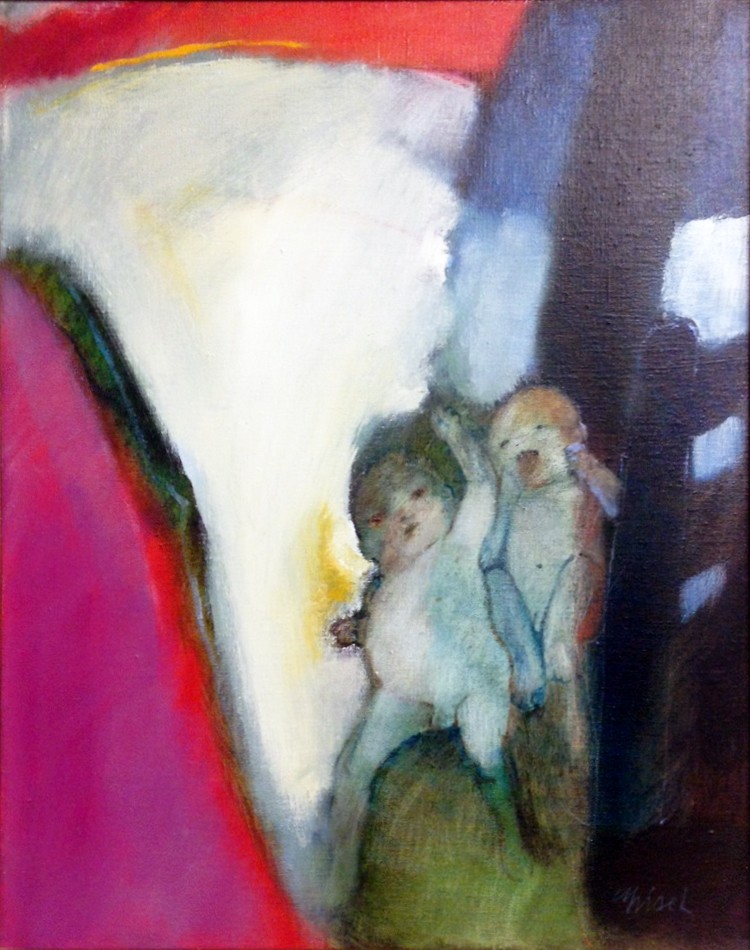
A consciousness can be seen in many of these works, both of figures and in the scenes they appear in. Not to say the eyes of Hisel’s figures really gaze out, but there is logic and vitality to the worlds they inhabit. For example, the painting Air Walkers presents figures astride an almost invisible tightrope suspended entirely in space. Their faces, while displaying little obvious emotion seem aware of the absurdity of their positions as literal and figurative performers for an outside audience. The overly cliché comparison of square-framed art with that of a similarly framed window comes to mind. But instead of being trite, Hisel’s exploration of transparency thoughtfully engages with seeing and being seen. It is often taken for granted that viewers hold power in their ability to look at art. Much like a voyeur, the expectation is one of looking without being looked at. But in Hisel’s peopled landscapes there is no such security. Just as surfaces disintegrate and the comfort of walls and their ability to keep things out (or in) breaks down into a fluidity of light and space, Hisel’s figures seem to gaze out at the viewer and jumble the neat distinctions between realities.
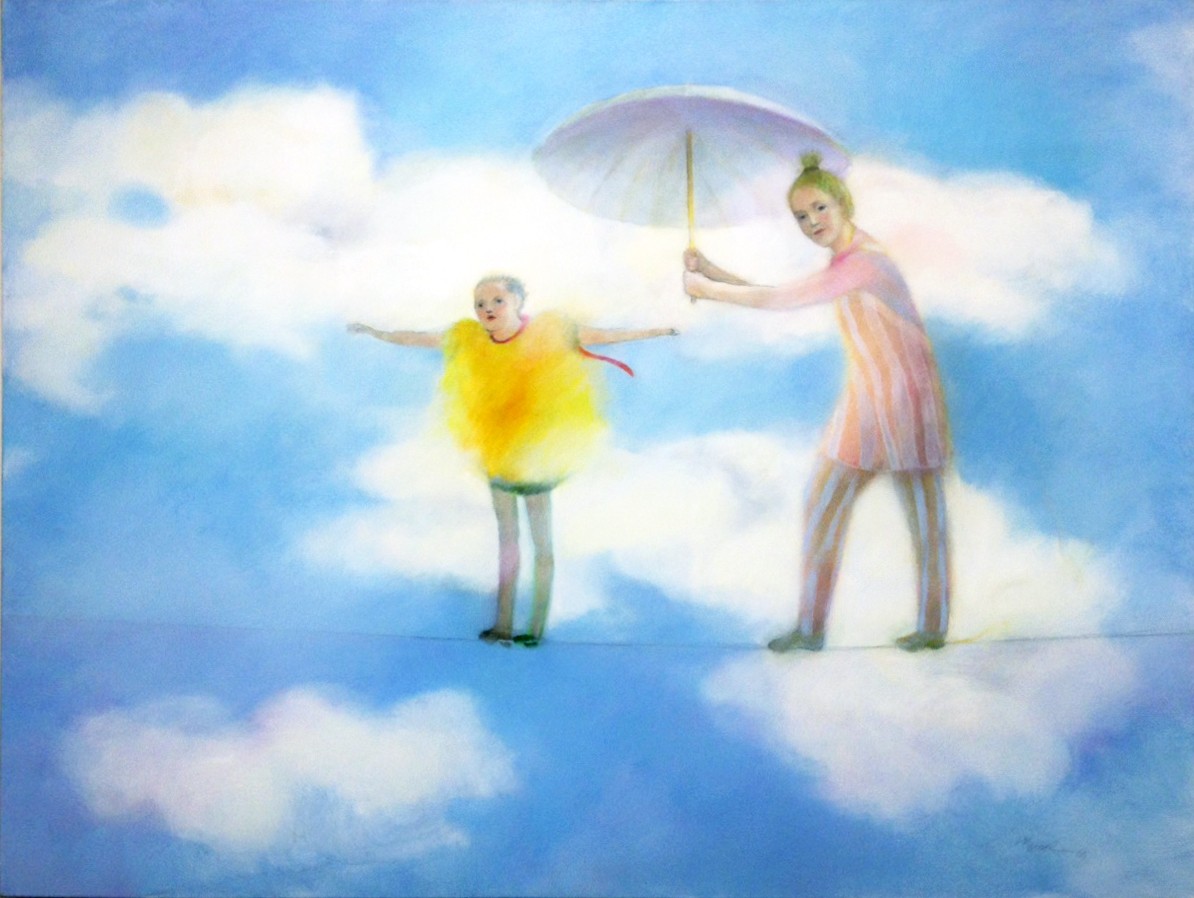
Circling back to the concept of the retrospective, this particular one is constructed in a somewhat subversive way. It is unexpected that none of the works are dated, especially if the purpose of the exhibition is to contextualize Hisel’s career as a certain length of time. Without specific dates, it is strange that there is a separate group of works dedicated to a specific (though still vague) “earlyâ€Â stage of Hisel’s career. It sticks out among the larger collection in which time is treated with little if any specificity. The majority of works mingle and viewers are left with a thematic rather than chronological sense of narrative. It might be assumed that the figures and landscapes, in their abstraction, progress towards the grotesque or greater transparency. Indeed, separate consideration of earlier works seems to suggest a shedding of borrowed styles for Hisel’s own personal vision. But viewers are not directed to project an easily graspable narrative of progression from style to style. Instead, the absence of dates allows the juxtapositions of works to be more conversational or collaborative than cardinal in direction. In the end, setting off a portion of works as “early†when time plays a much more conceptual role in the greater organization of the exhibition proves to distract rather than offer any insight into Hisel’s broader oeuvre.
Ultimately, it is the placement of works like Girl with Dogs and Riding Instructor in proximity that broadens this exhibition into something beyond the pitfalls of a straightforward chronological survey. Here two very distinct scenes share little in style or substance, yet there is a dialogue, both between the paintings and with the viewer. As the girl and the figure riding the horse seem to consider the realms outside their respective painting, the other figures look back into the mysteries of their own painted worlds. The viewer is invited to participate in this complex conversation between inward and outward, memory and fantasy. The focus shifts towards that of possibility, of new life in the present and future. Hisel’s work can continue to be dynamic rather than relegated to the finality of the past. With her passing in 2017, this exhibition allows Hisel’s life and work to reverberate in new and meaningful ways.
